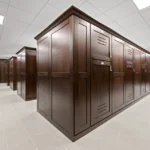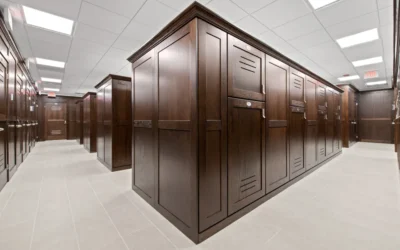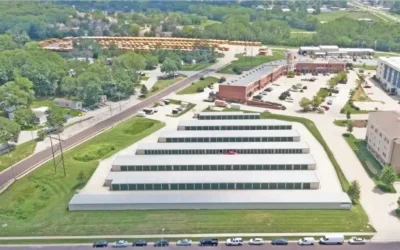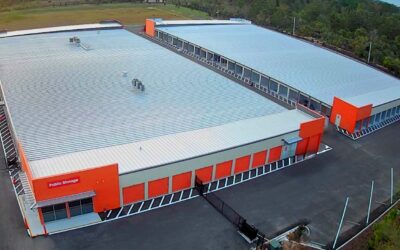It’s often been said that the self-storage industry is recession resistant, but is it also inflation resistant? For the time being, it looks that way.
Despite recent price spikes in construction materials, energy, wages and other items across the board in the U.S., the self-storage industry is keeping ahead of inflation via rent increases. So far, higher rates paid by tenants have more than offset the rise in operational and new-construction costs. Rising rents have also allowed facility owners to continue to reap impressive gains during troubled economic times.
No one is sure how long the current inflationary pressures will last. Nor is anyone sure how much more self-storage operators can continue to raise rents to offset inflation should ever-higher costs stick around much longer.
But industry players say that, for now, self-storage appears to have weathered the inflationary storm rather well.
“Even though costs are rising, our storage rates have, thankfully, increased by 15 to 20 percent,” says Scott Kelly, co-owner and chief operating officer of Florida-based StoreRight Self Storage, which owns 10 facilities in the Sunshine State. “So far, the balance between inflation and rent prices is working.”
The inflation problem
For years, self-storage has been touted as a “recession resistant” industry that tends to thrive during difficult economic times. This is due largely to hard-pressed consumers putting more of their belongings in storage as they downsize their housing needs and move around the country for new work opportunities.
The recent economic downturn, caused by COVID-19 lockdowns and disruptions, was no exception to the recession-resistant rule, as demand for storage increased and rents rose accordingly across the country, sometimes by 30 percent or more in some markets.
But the COVID-19 pandemic also created severe supply-chain problems throughout the world economy, creating shortages of key products and materials and driving up prices for just about everything.
According to the U.S. Bureau of Labor Statistics, overall inflation was running at about 6.2 percent for the year ending in October. Energy prices were up a whopping 30 percent over the same period, while commodities were up by 8.4 percent, food up by 5.3 percent and transportation services up by 4.5 percent.
Meanwhile, labor costs have also been rising – by 4 percent during the three-month period ending in October, according to BLS data. That quarterly increase was preceded by similar wage increases in the year prior, due largely to pandemic-related labor shortages.
Storage holds tight
Inflation has hit self-storage in two areas – in operations and in new-construction – but both have been buffered by recent rent hikes.
Cory Sylvester, a principal at DXD Capital and a principle at Radius Plus, a self-storage data and analytics unit of Union Realtime, says labor costs have definitely impacted operational budgets at storage facilities, but not by much, due to the fact storage facilities traditionally employ only a handful of of on-site workers at any given time.
Other operational costs – such as for marketing, utilities, property taxes, insurance, and routine repair and maintenance – have also risen. But, again, they’ve largely been offset by recent rent spikes, industry players say.
How much longer will inflation stay around?
Alex Cohen, chief executive of Liberty SBF, a commercial real estate finance firm based in Philadelphia, says he sees inflation easing around mid-2022, as now-clogged U.S. ports start to get goods flowing again and as the economy gets back on a more even keel.
“We think we’re at peak supply-chain disruption,” Cohen said. But he added: “We’re obviously very cautious.”
As for construction costs, commodity prices for items such as steel and lumber were already increasing in the months leading up to the coronavirus outbreak in early 2020.
The pandemic merely exacerbated those inflationary trends for commodities, according to the Associated General Contractors, which estimates construction costs in general have risen nearly 30 percent since the start of the pandemic. Meanwhile, labor costs have also spiked since the start of the pandemic, due to an acute labor shortage within the construction industry.
Michael Boorstein, a principal at MJ Partners Real Estate Service, says some developers have pulled back from new construction projects as a result of skyrocketing materials and labor costs. “They’ve penciled it out and can’t make it work,” he says of the mathematics of launching new expansion or ground-up projects.
Safe harbor in self-storage
But not all developers are pulling back, Boorstein and others note. Major investors have recently discovered self-storage is indeed resilient during economic hard times – and they’re now pouring money into the sector and chasing both acquisitions and new development deals.
“This past year was one of my best ever,” says John Bull, chief executive of John Bull Builders LLC, which currently has a slew of self-storage construction projects under way in California, Nevada, Oregon and Washington. “Self-storage has become too much of a lucrative business for investors to pull out. I’m not seeing construction slowing down.”
Meanwhile, asset values continue to rise, due to major investors eager to snap up storage properties that have remained profitable through thick and thin, thanks to substantial rent increases of late. Historically low interest rates have also made borrowing less expensive for those either buying older properties or building new ones, Liberty SBF’s Cohen says.
“This all bodes well for self-storage owners,” Cohen said.







